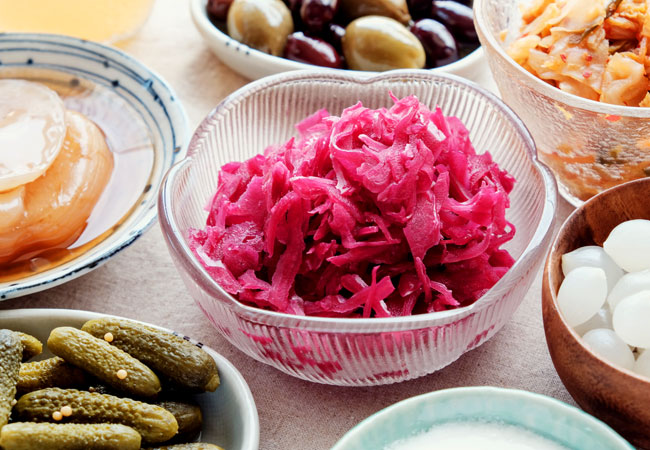
The Probiotic Effect: The Best for You
These strains are present in certain foods and dietary supplements. Each represents a family of probiotics, and includes sub-families (not mentioned in this table), with specific therapeutic actions depending on the pathology. They are presented here for information only.
Strain: Lactobacillus casei
It is found where: Food supplements – Enriched yogurt (Activia, Lactimel).
Benefits: reduces diarrhea and chronic inflammatory bowel disease (Mici); promotes digestion; also helps to lower high blood pressure. Go for the 유산균 there.
Strain: Lactobacillus acidophilus
It is found where: Food supplements.
Benefits: inhibits Helicobacter pylori (stomach ulcer).
Strain: Lactobacillus rhamnosus GG
It is found where: Food supplements.
Benefits: prevents and shortens gastroenteritis; decreases eczema and cavities; prevents recurrence of vaginal yeast infection.
Strain: Lactobacillus plantarum
It is found where: Food supplements.
Benefits: anti-cholesterol (LDL: 12% reduction / HDL: 10% increase); promotes digestion; relieves bloating and transit problems.
Strain: Bifidobacteriumlactis / longum
It is found where: Food supplements, yogurt.
It prevents and decreases the duration of diarrhea, stimulates the immune system and acts on the intensity of ENT diseases colds, tonsillitis, flu, decreases Helicobacter pylori, promotes better absorption and concentration of calcium in the blood.
Strain: Streptococcus thermophilus
It is found where: Yoghurt, hard cheese and soft cheese (Camembert, Brie). It plays a role in lowering cholesterol levels; helps to lower high blood pressure.Probiotics are presented today as versatile remedies and the benefits are extensively praised, especially in the intestine. But don’t we use these very fragile microorganisms a little bit by mistake? What precautions should be taken? How to choose? Certain particular strains have targeted effects on certain pathologies. Here’s how to build your army of bacteria.
Highly publicized in recent years, participating in the group of best sales in food supplements, probiotics are the subject of a real fashion phenomenon. But does this craze still correspond to a real therapeutic response?
The question arises today, given the panel of indications which continues to expand to the point of making people believe that they could be the panacea for all our physical ailments. However, using probiotics is not necessarily beneficial. Indeed, their tolerance is not always optimal. In addition, for certain pathologies, it is necessary to consider having recourse to them according to a certain protocol under penalty of their action going against the desired goal.
A century-old empirical use
At the beginning of the last century, Élie Metchnikoff (Nobel Prize for Physiology and Medicine in 1908) reported the extreme longevity of certain rural populations in Bulgaria to their regular consumption of fermented dairy products. He advises the rest of his life to adopt this type of food on a daily basis.In the process, the first fermented milk products sold in pharmacies appeared in the early 1920s, followed by the first food supplements based on lactobacilli, then yeast (Ultra-Yeast).According to the 2001 Codex Alimentariusdefinition , probiotics are “living microorganisms which, when administered in adequate amounts, produce a health benefit for the host”. Unlike resident bacteria, probiotics pass through the digestive tract but do not colonize it.
Conclusion
Despite this relatively short breakthrough time, they will be able to be effective, but only if certain conditions are met, such as their very large number in the ingested food supplement, their ability to resist stomach acidity and action of bile salts (sine qua non of their access to the intestine) and the presence in the large intestine of certain simple sugars which they can eat (prebiotics).



